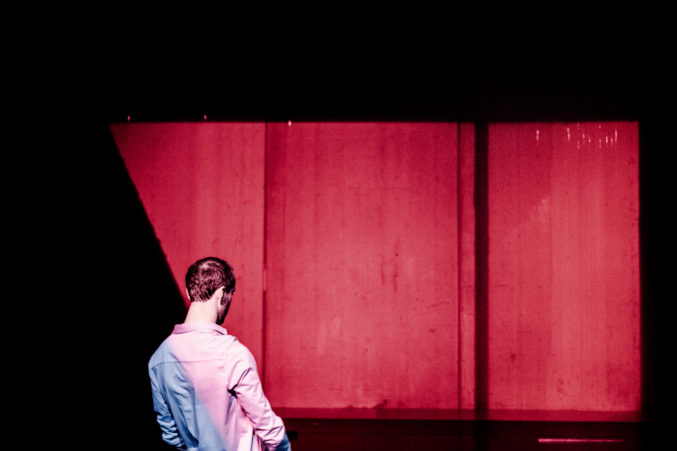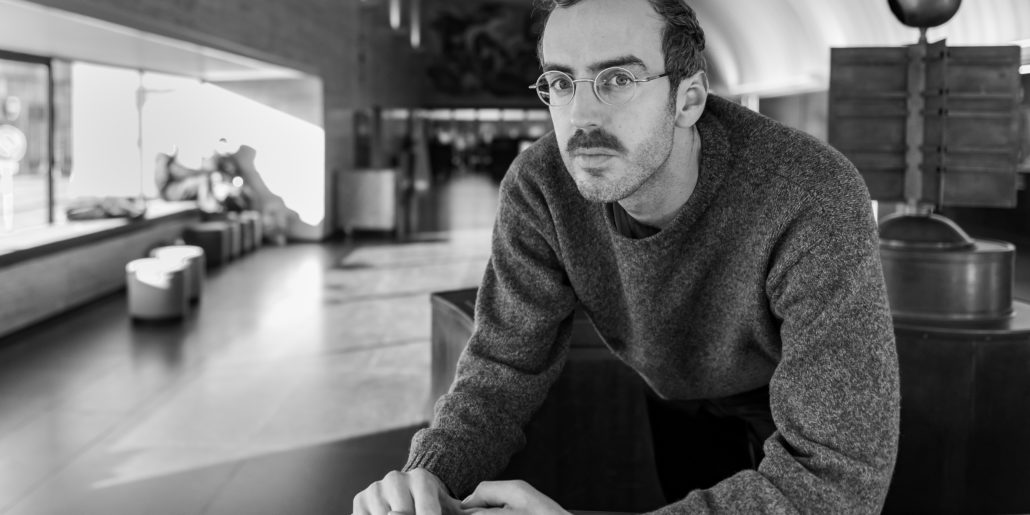Biography
Geert Belpaeme is a theater maker and actor. He graduated in 2010 from the drama course at KASK / School of Arts in Ghent, where he has also been a teacher and researcher since then.
Between 2010 and 2020, together with Mats Van Herreweghe and a changing group of fellow makers, he created performances under the collective name l’hommmm that balance between theatre, performance, dance and philosophical experiment. L’hommmm’s work is characterized by playfulness and abstraction that starts from an uninhibited imagination. In each performance, l’hommmm tries to create a new language, a new way to form meaning and communicate with an audience.
Between 2015 and 2018, Geert worked with Bosse Provoost, Kobe Chielens and Lieselotte De Keyser under the collective name De Polen on the performances Herberg and The Act of Dying.
He also worked as a player, coach and dramaturge with Bosse Provoost, Alexia Leysen, Alexander Vantournhout & Bauke Lievens, Circus Katoen, duo André-Leo, Julian Hetzel…
The materiality of the narrative, the impulsive imagination of the player and the search for a non-linear dramaturgy are recurring themes in Geert’s practice as a player and as a maker. His artistic language, sometimes reminiscent of an abstract and minimalist form of clowning, combines playfulness with philosophical rigor in performances that aim to challenge the dominant narratives of our time.
More info:
Photo: Yvan Mahieu
In residentie Please (don’t) let me be (mis)understood
01.01.2023 – 01.01.2023

With Please (don’t) let me be (mis)understood, Geert Belpaeme questions the figure of the clown. Contemporary clowning is often reduced to a game with petrified shapes and figures with a matching psychology. A typical example is the tragedy of the crying clown, as a melancholic celebration of failing people. However, clowning, like theater, is a performative practice with the potential to question existing relationships.
In Please (don’t) let me be (mis)understood, Geert Belpaeme wants to return to the core of clowning. It will be a choreographic deconstruction of the figure of the clown with the intention of once again exploring this rich potential. He uses clowning to explore new definitions of what it means to be human: how can we take a less aggressive position among other organisms, living systems, ecosystems and objects?
But how do you investigate that in the theater, a place that is precisely defined by the human gaze? How can you perform non-human relationships with a human body? Geert Belpaeme believes that the clown practice, with its inherent openness towards spaces, objects, relationships… offers an opening in this regard.

